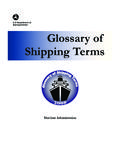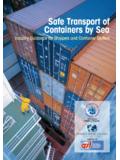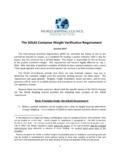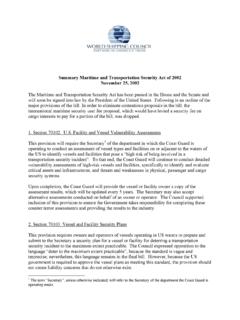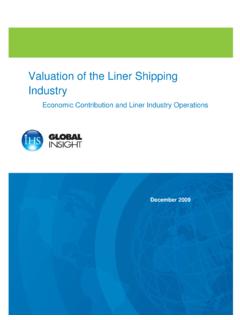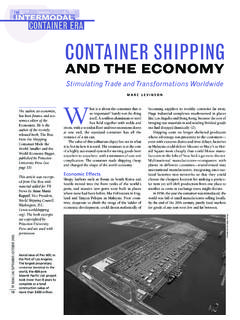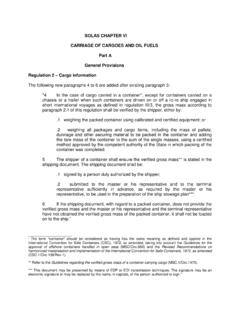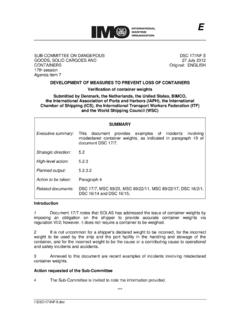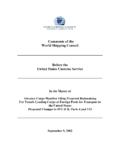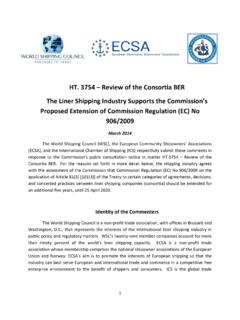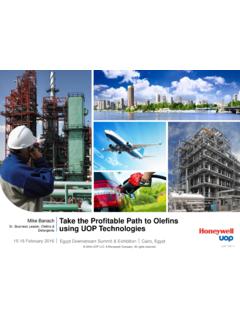Transcription of Shipping is cutting CO2 emissions - World Shipping Council
1 April 2015 Logistics Executive Briefing for importers and exporters For any information on the issues raised in this briefing, please contact: Simon Heaney +44 (0)20 7538 0191 Drewry Supply Chain Advisors, 15-17 Christopher St, London, EC2A 2BS, United Kingdom t: +44 (0)20 7538 0191 e: w: 2014 Drewry Supply Chain Advisors 04 Shipping is cutting CO2 emissions Lower fuel consumption, tighter rules reduce box Shipping s absolute CO2 level For anybody who is concerned that further growth in international trade and Shipping will result in more pollution and more global warming, there is now evidence that this risk is being tackled. At least three factors have substantially cut the fuel consumption of containerships: slow-steaming, the trend towards larger, more fuel-efficient ships and restrictions placed by government on ships coming into the ports.
2 The result? As average ship size on the Asia-North Europe route increased by 40% over the five-year period to 2013, CO2 emissions per round-voyage slot dropped by 35% (see chart below). Furthermore, as average containership sizes increased by a further 23% between 2013 and 2015 , it follows that emissions per unit of capacity must have continued to fall (more recent data is not available). Global container trade grows by 4-5% a year, so fuel efficiency gains of 6-8% a year mean that fewer tonnes of CO2 are pumped by containerships into the atmosphere than before. For example, in 2014, Maersk Line carried 7% more containers than the year before and reduced fuel consumption by container shipped by 8% - resulting in a net fall in the amount of fuel consumed and in associated CO2 emissions . Of course, there is another reason why container Shipping lines are reducing pollution from ships: by reducing fuel consumption, they also reduce their operating costs.
3 Since 2007, Maersk Line has achieved a 25% reduction in CO2 per container. If the carrier had not improved its energy efficiency and CO2 performance, the fuel cost in 2012 would have been US$ billion higher. Similarly, China Shipping Container Lines spent less money on bunkers in 2013 than in 2012, despite Shipping 2% more containers. For exporters and importers, lower ship consumption has translated into lower freight rates and a lower carbon footprint (from their company s international trade), but also longer transit times. In port, where pollution from all sorts of ship emissions is a particular problem, substantial progress has also been made. The port of Los Angeles reported that, during the 5-year period to 2010, the amount of diesel particulate matters emitted by ocean going ships in the port fell by 68% and the quantity of CO2 emitted by ocean going ships dropped by 22%.
4 Governments, the International Maritime Organisation, ports and Shipping lines are currently focussing more on sulphur emissions . Tighter limits on sulphur emissions from ships were implemented this year in parts of Europe and North America. Several carriers have also switched to low sulphur fuel when calling at the heavily polluted port of Hong Kong, following the introduction of rebates on port dues for greener carriers. The authorities in Hong Kong are said to considering a ban on the use of high sulphur bunkers by containerships calling at the port. The difficulty with government rules on the use of low-sulphur fuel is that they could cost Shipping lines and shippers more money due to the price differential between cleaner bunker oil and high-sulphur oil. Yet, overall, international Shipping is playing its part to protect the environment and the measures taken so far by both government and the private sector seem to have been very effective.
5 Average ship size vs average CO2 emissions (Asia-Europe route) between 2009 and 2013 Source: Drewry Maritime Research and BSR
